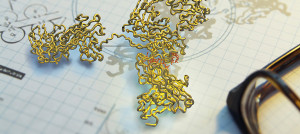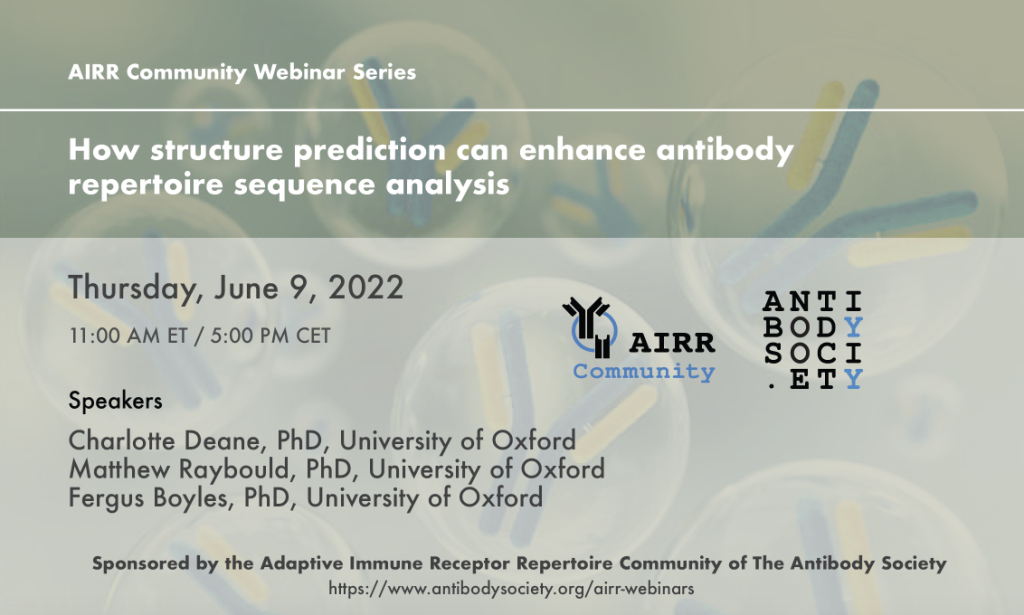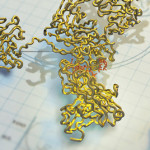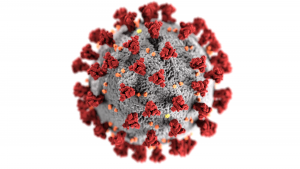In this webinar, Drs. Deane, Raybould and Boyles will share examples of how structure prediction enriches antibody sequence data and provide practical guidance for getting started using Oxford Protein Informatics Group (OPIG) tools to structurally featurise your antibody sequences. In particular, they will demonstrate the added value to tasks such as antibody functional clustering, repertoire disease-response diagnosis, and virtual screening.
2022 Science Writing Competition winners announced!
 Congratulations to our winners!
Congratulations to our winners!
To make science accessible, clear, concise communication is essential. The Antibody Society thus offers our student and post-doctoral fellow members a chance to grow this skill through a Science Writing Competition. Entrants submitted essays of 1200 – 1500 words on a topic related to antibody research that were evaluated by our panel of judges.
Our post-doc and student winners are:
Dr. Finn Wolfreys, University of California, San Francisco, CA, USA
Essay title: Antibody Discovery’s Diversity Problem
Alexander Brown, University of Colorado Anschutz Medical Campus, Aurora, CO, USA
Essay title: Immunity in a Deck of Cards
The winning essays can be accessed via the links above.
View all winning essays from the
Science Writing Competitions here
The next Science Writing Competition opens in Feb. 2023.
Thanks to everyone who participated!
Our Antibody Research Competition is open!
Attention Students & Post-docs!
Each year, The Antibody Society sponsors competitions to recognize and encourage the research activities of promising student/postdoctoral fellows.
We invite you to submit a summary of your work on a topic related to antibody research. While such summaries are traditionally presented as posters, feel free to be creative and present the content in other formats, such as video.
Relevant topics include, but are not limited to:
- Antibody engineering or design
- Antibody therapeutics
- Fc effector functions
- Bispecific antibodies
- Antibody-drug conjugates
- Adaptive immune receptor repertoires
The winning antibody research will be featured on The Antibody Society’s website and winners will receive a $400 USD cash prize.
Two winners (1 student, 1 post-doc) will be selected by our panel of judges based on the originality, creativity, scientific merit, and clarity of their research and its presentation.
Send your entry to membership@antibodysociety.org. The first 30 submissions will be considered for the competition. Please include your contact details and whether you are a student or post-doc in your email.
Submission deadline: July 15, 2022
Entry is limited to The Antibody Society student and post-doc members.
Not a member? Register here for your free membership!
Please note that all entrants must abide by the competition rules found here.
Biologics Developability: Call for Papers
 Developability of biologics refers to their likelihood of success in progressing through manufacturing and clinical trials toward approval by regulatory authorities to be marketed as a drug for use in humans. A highly developable biologic should not only maintain high titer, good chemical and structural stability, resistance to various manufacturing stresses, such as low pH, shear stress, light, heat, for ease of manufacturing, but also possess target specificity, durable pharmacokinetics (PK) and low immunogenicity for assurance of safety and efficacy. Thus, developability is an umbrella concept under which manufacturability and other drug-like properties reside. Developability assessment via experimental assays or in silico analyses conducted during early-phase research can be crucial in (1) shaping lead molecule optimization strategy, (2) supporting selection of a final drug candidate molecule for progression into manufacturing, GLP toxicity studies, and other preparations for human clinical trials, and (3) reducing attrition and failure of therapeutic molecules in clinical trials. During the development stage, developability evaluation focuses more on assessment of critical quality attributes (CQAs) and quality control of product and manufacturing process-related impurities to ensure safety and efficacy.
Developability of biologics refers to their likelihood of success in progressing through manufacturing and clinical trials toward approval by regulatory authorities to be marketed as a drug for use in humans. A highly developable biologic should not only maintain high titer, good chemical and structural stability, resistance to various manufacturing stresses, such as low pH, shear stress, light, heat, for ease of manufacturing, but also possess target specificity, durable pharmacokinetics (PK) and low immunogenicity for assurance of safety and efficacy. Thus, developability is an umbrella concept under which manufacturability and other drug-like properties reside. Developability assessment via experimental assays or in silico analyses conducted during early-phase research can be crucial in (1) shaping lead molecule optimization strategy, (2) supporting selection of a final drug candidate molecule for progression into manufacturing, GLP toxicity studies, and other preparations for human clinical trials, and (3) reducing attrition and failure of therapeutic molecules in clinical trials. During the development stage, developability evaluation focuses more on assessment of critical quality attributes (CQAs) and quality control of product and manufacturing process-related impurities to ensure safety and efficacy.
Since the concept was introduced over a decade ago, developability is now a fast-changing field. mAbs thus aims to assemble a collection of articles reflecting the latest thinking across the industry in this area of drug research and development. As such, we invite The Antibody Society members, mAbs readers and the broader scientific community to contribute review articles focused on early stage developability assessment, and practical considerations, new technologies and strategies for CQAs assessment and control system at later stages of drug development. The reviews should narrate the state of the art and speculate on new vistas for the field.
mAbs will waive publication charges for up to 8 of the best review articles selected from pre-submission inquiries, which should consist of the title, abstract and general outline of the intended review article.
We are particularly interested in reviews in the following topics:
Early-Stage Drug Research
● Review of the latest assays being used for assessment of developability. Include practical considerations of workflows, prioritization of assays given limited amounts of protein early on and based on known redundancies, and interpretations of assay results for decision making
● Review of the latest in silico tools for stage appropriate risk assessment. For example, using machine learning-based data analysis and prediction for lead optimization and creating more manufacturable biologics
● Commonalities and idiosyncrasies of manufacturability/developability assessment across non-traditional formats – ADCs vs bispecifics vs mAbs vs fragments vs Fc fusions
● Translatability of manufacturability/developability risk assessment assays to preclinical and clinical readouts
Drug Development / CMC
● Considerations on how product and process-related quality attributes impact PK/PD, biodistribution/retention at subcutaneous dosing sites, immunogenicity, such as host cell protein analysis and strategies used in CQA assessments
● Practical considerations, novel strategies, and new technologies such as mass spectrometry used in generating evidence for CQAs assessment and process and product quality control
Although these topics are especially of interest, we welcome well-written reviews in related areas as well.
The deadline for the pre-submission enquiries is June 15, 2022, and the deadline for submission of the completed review articles is November 15, 2022.
Please send pre-submission inquiries to Editor-in-Chief Dr. Janice Reichert (reichert.biotechconsulting@gmail.com), and feel free to contact Assistant Editors Drs. Nathan Higginson-Scott (nathan.higginson-scott@seismictx.com), Feng Yang (yang.feng@gene.com) and Li Zhou (li.zhou@abbvie.com) if you have any questions.
Join us on May 26 for our next webinar!
Understanding memory B cell responses induced by heterologous SARS-CoV-2 exposure
Thursday May 26, 2022 11am ET / 5pm CET
Speaker: Laura M. Walker, PhD
Senior Director of Antibody Sciences at Adimab and Chief Scientific Officer and a co-founder of Adagio Therapeutics.
Understanding immune responses following severe acute respiratory syndrome coronavirus 2 (SARS-CoV-2) breakthrough infection will facilitate the development of next-generation vaccines. Towards this end, Dr. Walker and her colleagues profiled spike (S)-specific B cell responses following Omicron/BA.1 infection in mRNA-vaccinated donors. The acute antibody response was characterized by high levels of somatic hypermutation and a bias toward recognition of ancestral SARS-CoV-2 strains, suggesting the early activation of vaccine-induced memory B cells. BA.1 breakthrough infection induced a shift in B cell immunodominance hierarchy from the S2 subunit toward the receptor binding domain (RBD). A large proportion of RBD-directed neutralizing antibodies isolated from BA.1 breakthrough infection donors displayed convergent sequence features and broadly recognized SARS-CoV-2 variants of concern. Dr. Walker will discuss these findings, which provide insights into the role of pre-existing immunity in shaping the B cell response to heterologous SARS-CoV-2 variant exposure.




